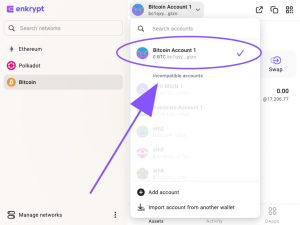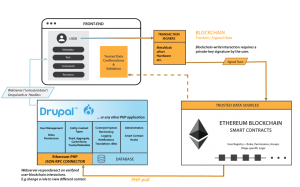Master Online Learning Techniques
Navigating the digital landscape of online education requires more than just clicking "enroll." Mastering online learning transcends simply consuming content; it's about cultivating effective strategies for engagement, retention, and ultimately, success. This guide delves into the core principles, practical tools, and essential techniques to transform your online learning experience from passive consumption to active mastery.
From optimizing your learning environment and mastering digital tools to building effective study habits and fostering online collaboration, we'll equip you with the skills and knowledge to thrive in the ever-evolving world of online education. We'll explore various learning styles, time management strategies, and methods for staying motivated, ensuring you can adapt these techniques to your individual needs and preferences.
Defining Effective Online Learning Strategies
Successful online learning hinges on a proactive and adaptable approach. It requires a shift in mindset from traditional classroom learning, emphasizing self-discipline, effective resource management, and a deep understanding of one's own learning preferences. This section Artikels key strategies to maximize your online learning experience.
Core principles underpin successful online learning. These include setting clear learning goals, actively engaging with course materials, seeking feedback regularly, and building a supportive learning community. Effective learners leverage technology to enhance their studies, utilizing tools like digital note-taking apps, online collaboration platforms, and scheduling applications. A structured approach, combined with self-awareness, is crucial for navigating the flexibility and self-directed nature of online education.
Learning Styles and Online Adaptation
Understanding your learning style – visual, auditory, kinesthetic, or a combination – is vital for optimizing your online learning experience. Visual learners benefit from using mind maps, diagrams, and videos. Auditory learners might prefer podcasts, audio lectures, and discussions. Kinesthetic learners thrive through hands-on activities, simulations, and interactive exercises. Online platforms offer diverse content formats to cater to these preferences.
For instance, a course could include video lectures for visual learners, audio summaries for auditory learners, and interactive quizzes for kinesthetic learners. By consciously choosing learning materials that align with your preferred style, you enhance comprehension and retention.
Effective Time Management for Online Learners
Effective time management is paramount in online learning. Procrastination is a common challenge, so implementing a structured schedule is essential. This could involve creating a weekly timetable, allocating specific times for studying, assignments, and breaks. Utilizing time management tools, such as calendar apps or productivity software, can aid in organizing tasks and tracking progress. Breaking down large assignments into smaller, manageable tasks prevents feeling overwhelmed and promotes a sense of accomplishment as you complete each step.
Regularly reviewing your schedule and adjusting it as needed ensures you remain on track with your learning goals.
Staying Motivated and Avoiding Procrastination
Maintaining motivation throughout an online course requires proactive strategies. Setting realistic goals and celebrating milestones helps to build momentum and a sense of achievement. Joining online study groups fosters a sense of community and provides opportunities for peer support and accountability. Regular breaks and self-care are crucial to avoid burnout. Identifying and addressing personal procrastination triggers is also important.
This could involve eliminating distractions, utilizing the Pomodoro Technique (working in focused bursts with short breaks), or rewarding yourself for completing tasks. Consistent effort, coupled with self-compassion, is key to sustained motivation and successful online learning.
Mastering Online Learning Platforms and Tools
Navigating the digital landscape of online learning requires familiarity with various platforms and tools. Effective use of these resources significantly impacts learning outcomes, enhancing both efficiency and engagement. Understanding their capabilities and limitations is crucial for maximizing the potential of online education.
This section explores different Learning Management Systems (LMS), online learning tools, and online resources, providing practical guidance for their effective utilization.
Learning Management System (LMS) Comparison
Learning Management Systems (LMS) serve as central hubs for online courses, offering features like course content delivery, assessment tools, communication forums, and grade tracking. Popular LMS platforms include Moodle, Canvas, Blackboard, and Brightspace. Each possesses unique strengths and weaknesses. Moodle, for example, is known for its open-source nature and extensive customization options, making it highly adaptable but potentially requiring more technical expertise to manage.
Canvas, on the other hand, prioritizes user-friendliness and intuitive navigation, offering a streamlined experience but with potentially fewer advanced features. Blackboard, a long-standing platform, boasts robust features and widespread adoption but might feel less modern compared to newer systems. Brightspace emphasizes collaboration and communication tools, offering strong features for group projects and interactive learning. The optimal choice depends on the specific needs of the institution and learners.
Benefits and Drawbacks of Online Learning Tools
A range of tools complements LMS platforms, enhancing the online learning experience. Video conferencing tools, such as Zoom and Google Meet, facilitate real-time interaction between instructors and students, fostering a sense of community and enabling immediate clarification of doubts. However, technical glitches and internet connectivity issues can disrupt sessions. Collaborative software, including Google Docs and Microsoft Teams, supports group projects and asynchronous collaboration, allowing students to work together on documents and share resources.
Yet, effective collaboration requires clear communication protocols and careful management of version control.
Effective Use of Online Libraries and Digital Archives
Online libraries and digital archives offer vast resources for research and learning. Databases like JSTOR and EBSCOhost provide access to scholarly articles and journals, while platforms like Google Scholar offer a broader search across various sources. Effective use involves developing robust search strategies, critically evaluating sources for credibility and relevance, and properly citing materials to avoid plagiarism. Understanding the different search operators and database functionalities is key to efficiently navigating these vast information repositories.
For example, using Boolean operators (AND, OR, NOT) significantly refines search results.
Navigating a New Online Learning Platform: A Step-by-Step Guide
- Account Creation and Login: Locate the platform's registration page, provide the necessary information, and create a secure password. Familiarize yourself with the login process.
- Course Navigation: Explore the platform's interface to understand the course structure. Identify key sections such as the syllabus, announcements, assignments, and discussion forums.
- Content Familiarization: Review the course syllabus to understand learning objectives, assessment methods, and deadlines. Browse the course content to get an overview of the topics covered.
- Technical Setup: Ensure your computer meets the platform's system requirements. Test your internet connection and any necessary software (e.g., video conferencing applications).
- Communication and Support: Locate the communication channels (e.g., email, discussion forums) to contact instructors or technical support if needed. Familiarize yourself with the platform's help resources.
- Practice and Exploration: Experiment with the platform's features to become comfortable with its functionalities. Don't hesitate to ask for help if you encounter any difficulties.
Optimizing the Online Learning Environment
Creating an effective online learning environment is crucial for success. It involves more than just having a laptop and internet access; it requires careful consideration of your physical and mental workspace to maximize focus and minimize distractions. This section will explore strategies for optimizing your learning space and maximizing your learning potential.
Designing an Ideal Workspace
A well-designed workspace significantly impacts concentration and productivity. The ideal workspace should be dedicated solely to studying, free from the clutter and distractions associated with other activities. Consider a quiet room with ample natural light, a comfortable and ergonomic chair that supports good posture, and a desk large enough to accommodate your laptop, notes, and any other necessary materials.
Good lighting minimizes eye strain, while a comfortable chair prevents discomfort and promotes focus. Maintaining a clean and organized workspace further enhances concentration by reducing visual clutter and promoting a sense of calm. A well-organized space allows for easy access to necessary materials, reducing time wasted searching for items.
Minimizing Distractions and Managing Interruptions
Minimizing distractions is paramount for effective online learning. This involves identifying and eliminating potential disruptions, both internal and external. External distractions include noisy environments, social media notifications, and interruptions from family or housemates. Strategies to mitigate these include using noise-canceling headphones, turning off social media notifications, and communicating your study schedule to others to minimize interruptions. Internal distractions, such as hunger, thirst, or fatigue, can also significantly impact concentration.
Addressing these proactively, through regular breaks for snacks and hydration, and ensuring adequate sleep, is essential. Techniques like the Pomodoro Technique, involving focused work sessions interspersed with short breaks, can help maintain focus and prevent burnout.
Effective Note-Taking and Information Retention
Effective note-taking is a crucial skill for online learning. Instead of passively listening or watching, active note-taking enhances comprehension and retention. Different methods cater to various learning styles. Some students prefer linear note-taking, while others find mind-mapping or Cornell notes more effective. Regardless of the method chosen, consistency and organization are key.
Regular review of notes, spaced repetition, and active recall techniques, such as testing yourself on the material, further enhance information retention. Integrating visual aids, such as diagrams or flowcharts, into notes can also improve understanding and memory.
Sample Weekly Schedule
Balancing online studies with other commitments requires careful planning and prioritization. A well-structured weekly schedule helps allocate time effectively for studies, work, personal commitments, and relaxation. The following table illustrates a sample schedule; adjust it to suit your individual needs and commitments.
| Day | Time | Activity | Notes |
|---|---|---|---|
| Monday | 9:00 - 12:00 | Online Coursework - Module 1 | Focus on lecture videos and assigned readings. |
| Monday | 14:00 - 16:00 | Work | Part-time job. |
| Tuesday | 10:00 - 12:00 | Online Coursework - Module 2 | Complete assigned exercises and quizzes. |
| Tuesday | 19:00 - 20:00 | Review Notes | Active recall and spaced repetition. |
| Wednesday | 9:00 - 11:00 | Work | Part-time job. |
| Wednesday | 14:00 - 16:00 | Personal Errands | Grocery shopping, etc. |
| Thursday | 10:00 - 13:00 | Online Coursework - Module 3 | Focus on practical application exercises. |
| Thursday | 19:00 - 21:00 | Study Group Meeting | Collaborate with classmates. |
| Friday | 9:00 - 12:00 | Review and Prepare for Weekend | Review all notes from the week. Plan for the weekend. |
| Saturday | 10:00 - 14:00 | Free Time / Relaxation | Hobbies, exercise, etc. |
| Sunday | 14:00 - 17:00 | Review and Plan for Next Week | Prepare for upcoming lectures and assignments. |
Enhancing Online Collaboration and Communication
Effective online collaboration and communication are crucial for success in online learning. Building strong relationships with instructors and peers, participating actively in discussions, and understanding online etiquette are key components of a positive and productive online learning experience. This section will explore techniques and best practices to foster a thriving online learning community.
Effective Techniques for Online Discussion Participation
Participating actively in online discussions is more than just responding; it's about contributing meaningfully to the conversation. Consider the topic thoroughly before posting, ensuring your contributions are relevant and add value. Engage with others' posts by responding directly to their points, asking clarifying questions, and building upon existing ideas. Avoid simply agreeing or disagreeing without providing supporting reasoning or further insights.
A well-structured response, using clear and concise language, will contribute to a more productive and engaging discussion. For example, instead of simply saying "I agree," a more effective response would be, "I agree with your point about the importance of active listening. In my experience, I've found that [insert relevant experience] further supports this idea."
Building Strong Relationships with Instructors and Peers Online
Building rapport online requires proactive engagement and respectful communication. Regularly participate in discussions, respond thoughtfully to instructor feedback, and initiate conversations with peers. Utilizing features like video conferencing for group projects or office hours allows for a more personal connection. Showing genuine interest in others' perspectives and contributions fosters a sense of community. For instance, commenting on a peer's insightful post or offering assistance on a project demonstrates a willingness to collaborate and build relationships.
Remember, active listening and respectful dialogue are essential for creating positive online interactions.
Examples of Collaborative Online Projects
Numerous collaborative projects are well-suited to the online learning environment. Wikis allow for collaborative content creation and editing, ideal for group research projects or developing shared knowledge bases. Shared online documents, such as Google Docs, facilitate real-time collaboration on writing assignments or presentations. Online project management tools can organize tasks, track progress, and enhance communication within groups working on complex projects.
For example, a group could use a shared document to write a research paper, assigning sections to individual members who then collaborate in real-time to edit and refine the document. Another example could involve creating a collaborative presentation using a tool like Google Slides, allowing each member to contribute slides and then working together to refine the overall flow and presentation style.
Online Communication Etiquette and Best Practices
Maintaining professional and respectful communication is paramount in online learning. Before posting, proofread carefully to avoid grammatical errors and typos. Respond promptly to messages and emails. Respect differing opinions and avoid personal attacks. Use appropriate language and tone; avoid slang, jargon, or overly informal language.
Remember that online communication lacks the non-verbal cues of face-to-face interaction, making clear and concise writing even more important. For instance, using emoticons or emojis judiciously can help convey tone, but overuse can detract from professionalism. Furthermore, understanding the different communication styles of your peers and instructor is crucial for successful collaboration.
Assessing and Improving Online Learning Performance
Effective online learning necessitates a continuous cycle of self-assessment and improvement. Understanding your strengths and weaknesses, setting achievable goals, and actively seeking feedback are crucial for maximizing your learning outcomes. This section details strategies for evaluating your progress and addressing any challenges encountered along the way.
Self-Assessment Methods and Identifying Areas for Improvement
Regular self-assessment is vital for identifying areas needing attention. This involves honestly evaluating your understanding of the course material, your engagement with the learning activities, and your overall learning approach. Effective methods include reviewing notes and assignments, completing self-quizzes and practice exercises provided by the course or created independently, and reflecting on your study habits and time management.
For example, if you consistently score poorly on quizzes related to a specific topic, it signals a need for focused review and potentially seeking additional resources, such as online tutorials or supplementary reading materials. Analyzing your performance across different assignments can also reveal patterns, indicating whether you struggle with specific learning styles or particular types of assessments.
Goal Setting and Progress Tracking
Setting SMART goals – Specific, Measurable, Achievable, Relevant, and Time-bound – is crucial for effective progress tracking. Instead of a vague goal like "improve my grades," a SMART goal would be "Increase my average quiz score from 70% to 85% by the end of the semester, by dedicating 30 minutes each day to reviewing key concepts." Tracking progress can be achieved through various methods: maintaining a study journal to document daily activities and progress, using a planner or calendar to schedule study time and track deadlines, and utilizing online learning platforms that offer built-in progress tracking tools.
Regularly reviewing your progress allows you to identify what's working, what needs adjustment, and whether your goals remain realistic. For instance, if you find your initial goal is too ambitious, you can adjust it to make it more attainable without compromising your overall learning objectives.
Seeking and Utilizing Feedback
Constructive feedback is essential for identifying blind spots and improving your learning approach. Actively seek feedback from instructors, peers, and even online learning communities. Engage in discussions, ask clarifying questions, and participate in peer review activities when available. Analyzing feedback objectively, regardless of whether it's positive or negative, allows you to pinpoint areas for improvement. For example, if an instructor comments on your essay's lack of clarity, you can focus on improving your writing skills by using more precise language and organizing your thoughts more effectively.
Similarly, peer feedback can highlight aspects of your work that you may have overlooked, such as inconsistencies in argumentation or gaps in your understanding of the subject matter.
Overcoming Challenges and Setbacks
Online learning presents unique challenges, such as distractions, technical difficulties, and feelings of isolation. Developing effective coping mechanisms is key to overcoming these obstacles. Strategies include creating a dedicated study space free from distractions, proactively addressing technical issues by seeking support from IT helpdesks or online forums, and actively engaging in online communities to foster a sense of connection with peers and instructors.
For instance, if you experience difficulty focusing, incorporating short breaks and mindfulness techniques into your study routine can improve concentration. If you face technical problems, seeking help promptly prevents delays in completing assignments. If feelings of isolation become overwhelming, reaching out to instructors or peers for support can significantly improve your overall online learning experience.
Online Business in 2025
The online business landscape in 2025 is projected to be a dynamic and intensely competitive environment, shaped by technological advancements, evolving consumer behavior, and global economic shifts. Businesses that successfully navigate this landscape will be those that embrace innovation, prioritize data-driven decision-making, and adapt quickly to emerging trends. The skills and technologies mastered by online learners today will directly impact their ability to thrive in this future market.
Projected Landscape of Online Businesses in 2025
By 2025, the online business world will be characterized by increased personalization, automation, and a greater emphasis on sustainability and ethical practices. E-commerce will continue its rapid growth, with a significant portion of retail sales occurring online. However, the competition will be fierce, requiring businesses to differentiate themselves through superior customer experiences, innovative product offerings, and effective marketing strategies.
The rise of the metaverse and the increasing integration of augmented and virtual reality technologies will also present both opportunities and challenges for online businesses. For example, companies like Nike are already leveraging the metaverse to create virtual experiences and sell digital products, demonstrating a shift towards immersive online commerce.
Emerging Skills and Technologies Relevant to Online Business Success in 2025
Several key skills and technologies will be crucial for online business success in 2025. These include proficiency in data analytics, artificial intelligence (AI), cybersecurity, and digital marketing. A strong understanding of customer relationship management (CRM) systems and e-commerce platforms will also be essential. Furthermore, expertise in areas like blockchain technology, which can enhance security and transparency in online transactions, will become increasingly valuable.
The ability to adapt to new technologies and learn continuously will be paramount. For instance, proficiency in using AI-powered tools for marketing automation and customer service will be a significant advantage.
The Impact of AI and Automation on Online Businesses in 2025
AI and automation will significantly impact online businesses in 2025, streamlining operations, improving efficiency, and personalizing customer experiences. AI-powered chatbots will handle a larger portion of customer service interactions, freeing up human agents to focus on more complex issues. AI will also play a crucial role in marketing, enabling businesses to target specific customer segments with personalized messages and offers.
However, the increased use of AI and automation also presents challenges, including the need for robust cybersecurity measures to protect against potential threats and the potential displacement of human workers in certain roles. Companies like Amazon are already heavily utilizing AI for logistics, inventory management, and customer recommendations, demonstrating the transformative potential of this technology.
Innovative Business Models Likely to Thrive in the Online Marketplace of 2025
Several innovative business models are poised to thrive in the online marketplace of 2025. Subscription-based services, offering ongoing access to products or services, will continue to grow in popularity. The rise of the creator economy, where individuals build online businesses around their skills and passions, will also create new opportunities. Businesses leveraging the power of data to personalize customer experiences and develop targeted marketing campaigns will have a competitive edge.
Furthermore, businesses focused on sustainability and ethical practices are likely to attract increasingly conscious consumers. For example, companies utilizing direct-to-consumer (DTC) models, cutting out intermediaries and building stronger customer relationships, will likely experience significant growth. Similarly, the rise of businesses offering personalized health and wellness services online, tailored to individual needs, demonstrates a growing trend.
Last Point
Ultimately, mastering online learning is a journey of self-discovery and continuous improvement. By implementing the strategies and techniques Artikeld in this guide, you'll not only enhance your academic or professional development but also cultivate valuable skills applicable far beyond the online classroom. Embrace the flexibility and opportunities presented by online learning, and transform it into a powerful engine for personal and professional growth.
The future of learning is here, and with the right approach, your success is assured.
FAQ Section
What if I have a slow internet connection?
Download course materials beforehand, participate in live sessions during peak internet times, and communicate any connectivity issues to your instructors.
How do I stay motivated when learning online?
Set realistic goals, find a study buddy, reward yourself for milestones, and leverage online communities for support and accountability.
What are some effective note-taking strategies for online learning?
Utilize digital note-taking tools, combine visual aids with text notes, actively summarize key concepts, and regularly review your notes.
How can I manage my time effectively while balancing online learning with other commitments?
Create a detailed weekly schedule, prioritize tasks, utilize time-blocking techniques, and eliminate unnecessary distractions.



